Does economic development rule the people, or serve the people?

In the 1980’s when Burton A Weisbrod first published The NonProfit Economy, he wrote that the US economy was composed of three sectors, public, private, and nonprofit, intended to operate independently, each filling a unique function, which the others did not, but in the 1980’s, they were already merging and adapting in ways not ethically clean.
In 1997 Weisbrod published a paper titled The future of the nonprofit sector: Its entwining with private enterprise and government. Today In Maine the entwining is wide, deep and complete, concentrating power in the interests of a small circle of associates wielding wealth redistribution as it’s instrument, branding itself as networking and celebratory public private relationships. The conflation of the public, private, and non-profit sectors is a top down system. over riding local power where in public and private wealth including profit and non-profit sources is concentrated by one dominating and interconnected network, functioning as a single corporate entity advancing its own agenda. Hereafter referred to as the Network.
The story in this post began in Can Micro Industry Triumph in the Post Pandemic World?, where in I told of encountering advanced notice of upcoming coronavirus business grants, which was modified with “all the usual rules would apply”. I speculated that these grants would be distributed by the Maine Technology Institute.

Recently I again engaged with the ubiquitous network in response to an email from the Maine Center for Entrepreneurs, a private non-profit organization, The email was in partnership with the Maine Technology Institute, a non-profit public charity institute with a for-profit board. The Maine Center For Entrepreneurs developed the model for Maine’s network of seven technology centers. MTI provides matching grants for private businesses developing products for the commercial market.
An Oddly Structured Email Announcement
One Email serving two purposes
§15302. Maine Technology Institute 6-A. SBIR technical assistance program.
The email about SBIR and STTR grant funding has has two separate functions.
The function of the first section of the email complies with federal and state law as described in §15302. Maine Technology Institute, section B of 6-A. SBIR technical assistance program, by informing small businesses about available SBIR grant funding.
B. The institute shall conduct a program to inform small businesses of the federal SBIR program and the state program in order to ensure that all firms have the opportunity to participate in these programs. [PL 1999, c. 608, §12 (NEW).]
In this section of the email, the internet link to the SBIR page is not clickable. An image of the internet address is embedded into an image of the logo of the US Department of Agriculture. To get to the SBIR internet page one must type the link by hand into an internet search bar. As a call to action from Maine’s technology leaders, the marketing technology of this section is a throw back to the stone ages.
The second function in the email applies to section A of 6-A. SBIR technical assistance program, informing the Network’s targeted sector that there are Network grants available for hiring grant writers and scientists and connections available to former grant awardees, advantages which will give the Network’s candidates a competitive edge when applying for SBIR or STTR grants. This section contains the only clickable link in the email, identifying it as intended “call to action” function of the email.
A. The technical assistance program may include, but is not limited to, small grants to hire grant writers, networking with scientists and other successful SBIR awardees, seminars on agency-specific solicitations and grant writing. [PL 1999, c. 608, §12 (NEW).]
Neither the Maine Center for Entrepreneurs nor MTI can apply for the SBIR and STTR grants. Federal SBIR guidelines identify that the business is the applicant, but it is incorporated into §15302. Maine Technology Institute 6-A. SBIR technical assistance program. that MTI will oversee SBIR and STTR application funding. This establishment of support programs is consistent with Support Organizations/SBIR
The third section C, of 6-A. SBIR technical assistance program reads as if MTI is the determining authority over who is eligible to apply for SBIR grants.
C. The institute shall establish eligibility requirements and award selection criteria to serve as the basis for technical assistance funding under this program. [PL 1999, c. 608, §12 (NEW).]
The wording “technical assistance funding” under “this” program is misleading as it easily reads as if it applies to SBIR grants. MTI does not determine who is eligible to apply for SBIR and STTR grants. MTI can only determine who is eligible to apply for MTI’s grant funding intended to give certain applicants special advantages in applying for SBIR and STTR grants.
As such, Section B says that ‘all firms have the opportunity to participate in “these programs“ with “these programs” identified as “the federal SBIR program and the state program” which includes the State support program . Section C of 6-A. SBIR technical assistance program contradicts Section B by establishing eligibility requirements for the program which is supposed to be available to the participation of all firms according to Section B.
The SBIR Philosophy about Support Organizations
A thriving entrepreneurial innovation ecosystem is one in which universities, business development service providers, companies, and other ecosystem actors coordinate and leverage each other’s strengths to provide opportunities for all types of businesses. Support Organizations/SBIR
Response received to a Napkin Sketch from Maine Center for Entrepreneurs
Since the email had no specific instructions, I sent a napkin sketch of our vision for a network of ceramic slip casting studios and what we need to make it happen. In response I received the following:
There are a lot of “needs” in your email and, while I’d love to help you, I’m not sure any of them are eligible for a USDA SBIR. SBIR stands for Small Business Innovation Research and while the USDA program has a topic entitled “Rural and Community Development” they are generally aimed at research and development of technologies and services that improve quality of life. You mention establishing independent ceramic studios, but I don’t think this program would allow you to pass grant funding through to them.
The first sentence is typical of responses generated at all levels of the Network, a tone setter, containing the essence of the message from the Network to us, “you are not thinking small enough”, P.S. I love you. leading into questioning Andersen Design’s eligibility to qualify as a rural business followed by an an implication that we don’t qualify because the grant is for rural businesses that improve the quality of life.
Success Requires Placing a Research and Development Grant in a Holistic Context.
The quantity of needs were several because the napkin sketch was a holistic representation of the total picture, appropriate in view of 6-A. SBIR, Section A which states that assistance is not limited to the assistance listed. We need to acquire a space to work in and a staff to work with. This should be done before applying for a research and development grant, otherwise, it would be difficult to achieve results with in the 6 to 12 month framework of phase one of the grant, which is a prerequisite for phase two grant appropriation.
Relative to the level of funding being raised by local government and non-profit organizations, the amount of funding needed by Andersen Design to put our company in a competitive position to apply for the SBIR and STTR grants is small. The largest cost is the real estate for the facility. The SBIR and STTR grants could then be used to fund our research and development studio to develop new glazes and products in the same tradition that Andersen Design has been practicing since it was established as a business in a home in 1952. The establishing philosophy of Andersen Design was to create a hand made product affordable to the middle classes, and thus the slip casting method, consistent with the fundamental principal of design, form follows function. The middle class is a specifically targeted “commercial market” consistent with the purpose of MTI.
The network of slip-casting studios can produce the products and the Andersen Design brand can be the marketing venue for a line of curated American Designer-craftsmen products. The independent studios can also develop their own products, if they chose. My napkin sketch did not suggest that the SBIR grant would fund the independently owned production studios. The SBIR and STTR grants are appropriate for funding the staff and operations of the research and development studio which would be the property of Andersen Design. Other programs need to be identified that can help in funding the independent production studios.
The American Way
The SBIR has eleven different program agencies, a design, which serves diversity in the American economy. The philosophy on which the United States Constitution was founded is that government serves the people and not the other way around. Andersen Design is a rural Maine business since 1952. and one of the many small businesses that were growing in the 1970’s when the centralized economy of Maine was deemed into being, claiming that State intervention was needed because small businesses have a more difficult time finding capital than large ones, so the State had to step in to aid small businesses in capitalization.
Guide to SBIR/STTR Program Eligibility 1. OVERVIEW The SBIR and STTR programs are designed to support small, independent, US firms. To ensure that only these types of firms receive program funds, all awardees are required to certify at the time of award that the awardee firm meets the size, ownership, and control requirements of the programs. These requirements are stated in the Size Regulations [PDF], SBIR Policy Directives and STTR Policy Directives (pdf available at www.sbir.gov/about), and the periodic solicitations for proposals issued by the participating agencies (available under Funding tab at www.sbir.gov).
The Separate Identity Of the MTI Board
The MTI board is a separate legal entity than the Institute. The board of MTI is identified as a “Quasi-independent state entity” along with many other boards in Title 5: ADMINISTRATIVE PROCEDURES AND SERVICES ACT of the Maine statutes.
Part 18: ADMINISTRATIVE PROCEDURES
Chapter 379: BOARDS, COMMISSIONS, COMMITTEES AND SIMILAR ORGANIZATIONS §12021. Definitions
Subchapter 3: QUASI-INDEPENDENT STATE ENTITIES 5. Quasi-independent state entity. “Quasi-independent state entity” means an organization that has been established by the Legislature as an independent board, commission or agency to fulfill governmental purposes and that receives revenues that are derived, in whole or part, from federal or state taxes or fees.
[PL 2011, c. 616, Pt. A, §1 (NEW).]
6. Reporting entity. “Reporting entity” or “entity” means:
…..Q. The Maine Technology Institute under Title 5, section 15302; [PL 2011, c. 616, Pt. A, §1 (NEW).
In an interveiw with Robert Martin, MTI’s former director, a LePage appointee, MTI is described as: “an industry-led, publicly-funded, nonprofit venture organization that invests public funds into companies engaged in development of innovative technologies and propels them to commercialization.” Tide Smart Talk with Stevo
Strategic Linguistic Maneuvering
Today there is a growing trend to switch the meaning of commonly used words with the expectation that the listener or speaker is assuming the traditional meaning. In example, traditionally a loan is an agreement to borrow money and pay it back with interest. An investment is made for profit, and a grant is granted without expectation of repayment.
According to former MTI director, Robert Martin, what is referred to as matching grant, is actually a matching loan, begging the question, why then, is it not called a loan? It is quite startling to read the director of a non-profit public charity acknowledge that the charity is not philanthropic, it is a business investment organization
When you win a development award or you secure a development loan from us, there’s a point where you take your product to the market and you are sustaining sales revenues, then you are obligated to pay MTI back. We’re not philanthropic. We’re very much a business investment organization. Bob Martin pushes MTI to new heights Maine Biz
In the quote above Mr Martin moves quickly from “MTI”, a legal public charity, is not a philanthropic organization. Its grants are loans and its loans are investments! However, Mr Martin does not say MTI is an “institution”, he says it is an “organization”. Perhaps he is referring to MTI”s for-profit board.
As president of MTI, Mr Martin was a MTI board member. The MTI statute is written in an inconsistent and contradictory manner, requiring assumptions to be made based on a choice between structure and content.
In Chapter 407: RESEARCH AND DEVELOPMENT Subchapter 1: MAINE TECHNOLOGY INSTITUTE, it is stated
3. Board of Directors of the Maine Technology Institute. The institute is governed and all of its powers exercised by a board of directors, referred to in this chapter as the “board,” consisting of 13 voting members and 2 nonvoting members.
Immediately after that the statute states that the Governor shall appoint “directors” rather than using the term “board members” as would be consistent with the statement made that the Board of Directors would be referred to as “the board”, which consists of “members”. The statute then goes on to identify other heads of institutions as either voting or non voting ex officio directors, and identifies the director of MTI as a non-voting director
I do not know why this is done but it does lead to some confusion about whether the person referred to as a “director” is a director of “the institute” who cannot profit from its activities, or a board member who is authorized to make a profit and own intellectual property rights. Being that statements are placed under the heading 3. Board of Directors of the Maine Technology Institute, it is logical to assume that when the term “directors” is used under the heading Board of Directors, “board members” is intended but curious as to why the section first states that the term “board” will be used and that it consists of “members” and there after does not adhere to its own protocol.
§15302. Maine Technology Institute
According to the MTI statute, the director of the institute cannot benefit from “the net earnings of the institute ” but the institute and the board of the institute are set up as two legally separate entities. The MTI Statute prohibits directors from profiting from the activities of the institution but authorizes board members of the Institute to make a profit and own intellectual property rights, raising the question, can a director who is also a board member make a profit from net earnings of the board, a separate legal entity from the Institute?

The definition of a “grant” in the legislation that chartered the MTI corporation covers the whole map of possible financial arrangements, allowing all of them to be referred to as “grants”
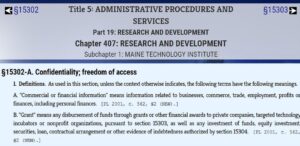
The more commonly held conception put forth by Investopedia
KEY TAKEAWAYS
A grant is a gift to an individual or company that does not need to be paid back. Investopedia

In the special act of legislation that chartered the MTI corporation, there is a wide array of traditional private sector functions authorized to the Institute, giving credence to the argument that MTI is no different than a private institution except in its access to government and non-profit funding. Here I am focusing on functions related to intellectual property rights, which is granted to the Institute (non-profit public charity):
The institute may: [PL 1999, c. 401, Pt. AAA, §3 (NEW).]
9. Royalties. Establish and execute a policy on royalties;
[PL 1999, c. 401, Pt. AAA, §3 (NEW).]

The Network’s definitions stand in stark contrast to the literature the SBIR website:
SBIR TUTORIAL 1
WHAT IS THE PURPOSE OF THE SBIR & STTR PROGRAMS?
As you can see, small businesses participating in the SBIR or STTR program receive many benefits: you receive funding with no strings attached — you do not give up equity in your company, you do not give up rights to the intellectual property, you do not return the funding — as this is not a loan. What is expected is good research that will lead to a commercial product and that will benefit the Nation.
“Good research that leads to a commercial product benefits the Nation” Thank you to the authors of the SBIR literature for stating that!
The MTI statutory definition of intellectual property rights should end after “trade secrets”, and not continue on to imply that by definition intellectual property belongs to the Institute. Likewise, “protecting intellectual property” is written as applying solely to MTI and no one else.
The definition of intellectual property rights is framed by MTI’s involvement and ownership claims, as if there is no intellectual property outside of MTI’s parameters. Such a MTI centric definition is a point in case that the entire network which encompasses MTI, and a large array of other public-private, profit-nonprofit entities, is in fact one continuous publicly funded corporate entity that serves its own in-crowd, excluding the general public. Andersen Design’s story of interacting with the Network is a case in point.
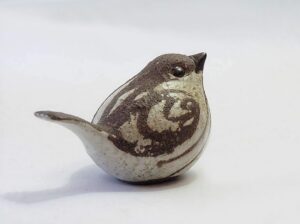
The Unattributed or Misattributed Value of Intellectual Property
Andersen Design possesses intellectual property assets developed over the course of almost seventy years. Although the Network employs many ways for its members to acquire ownership of intellectual property rights, in our interactions with the Network, our intellectual property are not assigned a value. Only financial assets have value.
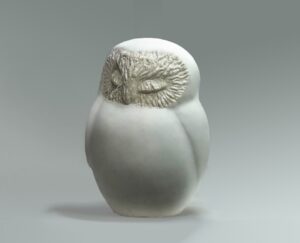
My understanding of the value of our intellectual property assets was reinforced by an encounter with the Network, in a meeting with a business advisor who is said to be very highly regarded in the Network. The business advisor was to help us with a business plan through one of the Networks economic development services. For the initial meeting the advisor insisted that only one person from our company be present and so I was not there. By the time that a second meeting was appropriate, it was evident that the advisor had no intention of helping our company and was just meeting with us as a formality of his position. He gave us a legitimate assignment but when we completed it and attempted to present it to him, he did not respond in any manner.
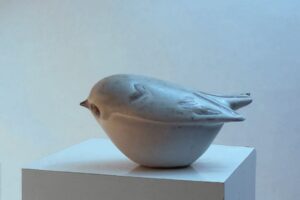
After a while I contacted another entity in the Network requesting support. That was when the advisor responded and invited us to meet again. I needed to understand for myself what was going on in this relationships and insisted on a meeting in which we could bring any members of our team that we decide.
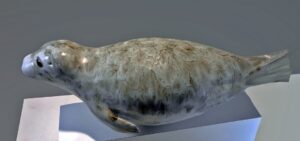
The fist thing the advisor said to me was to ask why I thought we were meeting and I answered “to have a dialogue”.The advisor responded with “You know what I think a dialogue is? Me talking and no one interrupting”- an example of a transformation in the meanings of a common language term. The definition the advisor gave for “dialogue” is the definition of a lecture or TED talk , and not that of a dialogue.
Merriam Webster Definition of dialogue
1: a written composition in which two or more characters are represented as conversing
2a: a conversation between two or more persons also : a similar exchange between a person and something else (such as a computer)
b: an exchange of ideas and opinions
/organized a series of dialogues on human rights

The advisor was a man possessing only loose control over impulses. His soliloquy was spliced with gushing over the value he recognized in our product line and our brand. Although he clearly hated us, for reasons I shall refrain from speculating on, his identity as a hostile agent who could not stop himself from acknowledging the value of our intellectual assets, underscored the value of our intellectual assets in a heightened way.
Although the advisor recognized the value of our assets we never heard from the advisor again. He never intended to help us. It seems we are not in with the Network’s in crowd!

Back to the email that initiated this story, jointly sponsored by the Maine Technology Institute and the Maine Center for Entrepreneurs, it displayed the following message in an attention-grabbing highlighted box:
INTERESTED IN UP TO $700K TO DEVELOP YOUR TECHNOLOGY, PRODUCT, OR SERVICE?
USDA’s Small Business Innovation Research (SBIR) solicitation is currently open and applications are due October 23. MCE and MTI are offering one-on-one meetings to help determine whether your company is a good fit for one of USDA’s 11 broad topics, including Rural and Community Development and Small and Mid-Size Farms. MCE and MTI have programs to help you evaluate your fit for this program and then help you submit a winning application!
To get you started, we are offering one-on-one virtual Zoom meetings with Cindy Talbot of MCE and Karen West of MTI — their organizations’ SBIR experts!
Many of today’s high tech innovative technologies which would easily qualify as eligible by Network standards are apt to be innovations to automate production, since automated production is the direction of the future and serves the profit motive better than hand made production, involving humans in the making process. Automated production may serve mankind’s material needs but hand made production is a working process which develops psychological and physical well being and nurtures an inquiring and innovative mind, such as is needed in designing a recipe for a unique glaze and a related body from raw materials.
Sign up to support an Andersen Design KickStarter Campaign, and.or to show interest in being a working partner HERE
The Andersen Design vision of a network of independently owned networked studios is premised on the business in the home which is based on the family farm, a traditional quality of life of rural living. In consideration of corona virus, a business in the home accommodates sheltering in place while providing an opportunity to develop an income, particularly for those whose only other options may be to work as essential workers who have heightened exposure to the virus. A network of studios linked together by a common brand provides a community of interests. We all need a community connection where we can feel a sense of belonging and engagement.
Direct from the Source:
The Small Business Innovation Research (SBIR) program at the U.S. Department of Agriculture (USDA) offers competitively awarded grants to qualified small businesses to support high quality research related to important scientific problems and opportunities in agriculture that could lead to significant public benefits. The program stimulates technological innovations in the private sector and strengthens the role of federal research and development in support of small businesses. The SBIR program also fosters and encourages participation by women-owned and socially or economically disadvantaged small businesses. (emphasis mine)
USDA has two unique topic areas: Rural and Community Development and Small and Mid-Size Farms. Through these two topic areas USDA encourages proposals that utilize both new and existing innovations in order to address important economic and social development issues. Applications in response to Rural and Community Development topics don’t need to be centered on agriculture, but may focus on any area that has the potential to provide significant benefits to rural Americans. Applications in response to the Small and Mid-Size Farms often focus on increasing profitability and efficiencies within farming operations. (emphasis mine)
As a company that took the road less travelled back in the 1980’s by not moving our production to low cost global labor markets. As a business in a home, creating a product from the raw materials of the earth, we are a natural fit with the farming quality of life. Historically farmers seasonally supplement their income with making hand crafts, which was a cottage industry that ended when the industrial revolution set in. Now the industrial revolution is giving way to the automated revolution and hand crafted making has a new purpose, the more so in an economy shaped by corona virus.

Intellectual property ownership is particularly significant to our family business which currently possesses intellectual property assets built over the course of almost seventy years, but lacks the necessary capital funding to transform our brand for the 21st century. We would have to be wary and savvy in interacting with a Network that has policies in place claiming ownership to intellectual property based on considerations other than authorship.
As I wrote about in How The Morrill Act gave birth to Public Ownership of Private Intellectual Property in the USA, the University of Maine has a policy in place to claim ownership of intellectual property based on what it determines to be “more than incidental use’ of its publicly funded facilities. The University of Maine is central to the Network and its technology facilities.
SBIR GRANT fosters opportunities for the disadvantaged
The purpose of the SBIR grant found on the SBIR website includes fostering and encouraging participation by women-owned and socially or economically disadvantaged small businesses.
Technology means the application of scientific knowledge in industry
On Page 2 of the SBIR Tutorial technological innovation is incorporated as as a qualification. The traditional meaning of technology is “the application of scientific knowledge for practical purposes, especially in industry”.
tech·nol·o·gy (Google definition)
the application of scientific knowledge for practical purposes, especially in industry.
Ceramics holds a special place in the history of technology, as one of man’s earliest innovations. According to the American Ceramics Society, the oldest known ceramic artifact is dated as early as 28,000 BCE (BCE = Before Common Era), during the late Paleolithic period.
Ceramics is both a science and an art. Andersen Design is recognized in our field for our long history of innovation in making our body, glazes and other decorating techniques from raw materials, the scientific aspect of ceramics and for our designs, the artistic side of our industry.
SBIR Program: Passion as a Prerequisite
In comparing the federal literature about the SBIR and STTR grants , there is great cultural hope for America in the fact that the federal literature is favoring the philosophy of a free market economy.
The SBIR literature places the quality of passion first and foremost. Passion is a characteristic of individuals and not of bureaucracies. An organization does not have passion. An organization is merely a structure. The only way that an organization has passion is through the individuals who participate in the organization.
To succeed in either the SBIR or STTR program, there are a number of prerequisites:
First, you must have a burning desire to conduct innovative research and development, AND
In today’s media it is common to find headlines decrying following one’s passion, and advising finding one’s bliss through serving the goals of the organization. By placing passion as a prerequisite the SBIR literature gives recognition to the individual as the place where innovation begins. This is consistent with the American view on ownership of intellectual property as belonging to the author. ( see Is Following Your Passion Politically Incorrect in the 21st Century? written by this author in June 2019)
The SBIR program starts with the same idea that inspired the Andersen Design concept of a network of independently owned ceramic slip casting studios. The concept of the network, began with recognizing self ownership as a state of mind that nourishes passion. The concept of a network of individually owned studios offers entrepreneurial opportunity at the roots of the economy which is practically non-existent in a centrally managed economy.
Second, a desire to develop a viable product that you want to bring to the marketplace. Just wanting to do research is insufficient — you must want to see that research commercialized or turned into a useful product that you and your firm will promote either directly or through a variety of commercialization strategies. SBIR Tutorial
The second SBIR prerequisite describes what Andersen Design has been doing since 1952
Applying for an SBIR grant depends on success in our grand plan
Although Andersen Design is arguably qualified to apply for an SBIR STTR grant, we are not currently in the best position to do so, however working backward, so to speak, can lead to new solutions. The words of the Beatles song are apopro: “I don’t have a car, and its breaking my heart, but I have a driver, and that’s a start !” The car is the real estate to house a facility and the driver is our intellectual property and our history.
The SBIR grants information says it is not for startups and Andersen Design is not a start up but we might be classified as such because we do not have a R&D facility, we do not have a staff, and we do not have a network of independent slip casting studios through which to make the products developed by the R&D studio, nor do we have a budget for launching our brand as a more high profile internet venue amd a marketing team to generate content in the age of social marketing. Any of these involve interesting and engaging work and most of them are adaptable to sheltering in place and social distancing.
What we have is a large and layered line of already developed product designs and original glaze, body, and decorating technique recipes and a brand identity established as a company that took the road less travelled in the 1950’s when Weston and Brenda were part of the original midcentury urban design movement and struck out on their own to establish a production as an art form on the rural coast of Maine.
Andersen Design took the road less travelled again in the 1980’s when Andersen Design didn’t move production overseas to low cost labor markets but competed successfully in a market flooded with such products. Those are our intellectual assets.
As a Non-Profit, Maine Center for Entrepreneurs can be a Fiscal Sponsor
In my conversation with the Maine Center for Entrepreneurs, I was kicked upstairs to the office of the executive director, There upon I made the point that as a non-profit organization Maine Center for Entrepreneurs could fiscally sponsor Andersen Design as a project, enabling Andersen Design to apply for foundation grants.
However, it is clearly contrary to the profit interests of the Network to offer simple fiscal sponsorship to companies developing products for the commercial market, as that would allow companies access to traditional grant funding.
All businesses need external support. There is a cultural need for alternate support networks to that of the command economy which dominates in Maine and perhaps other states. The Andersen Design proposed network of independent American ceramic design and slip casting studios can be one such network. when it materializes.
Originally published at https://www.datadriveninvestor.com on August 10, 2020.

Since agriculture remains an important contributor to the economy's wealth, it is important to know how to start an agriculture business.
Thanks for your contribution.